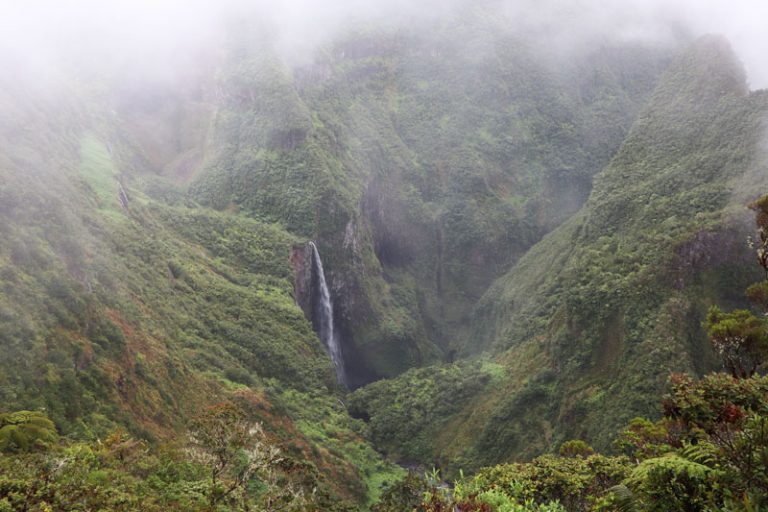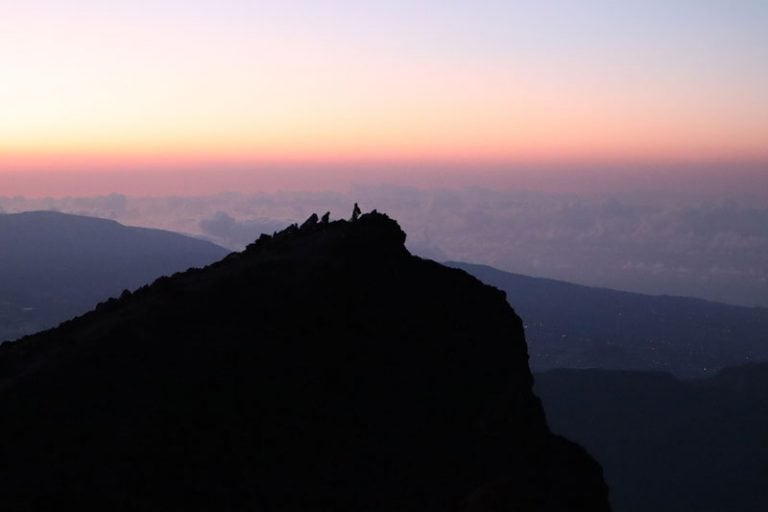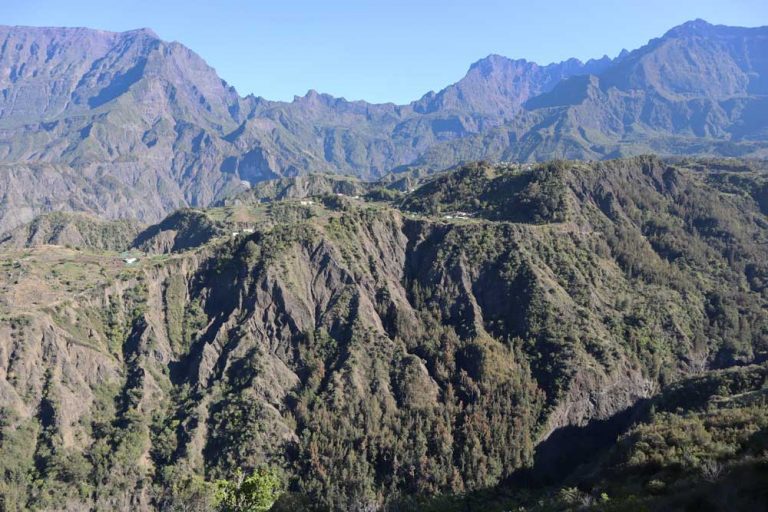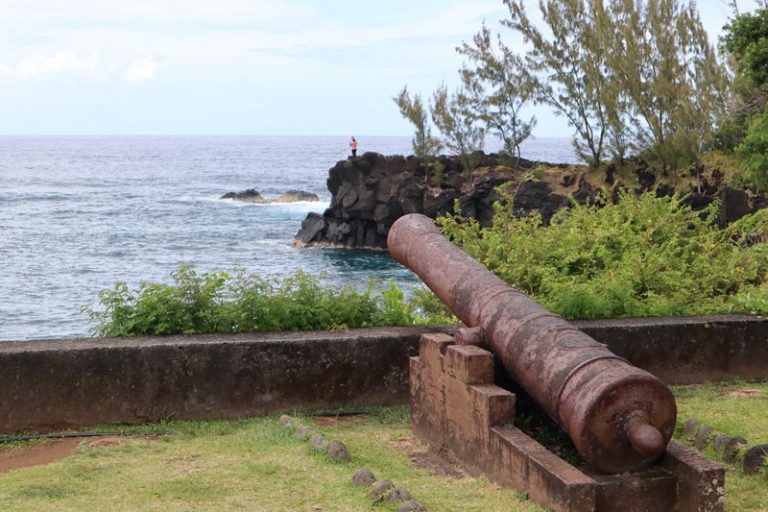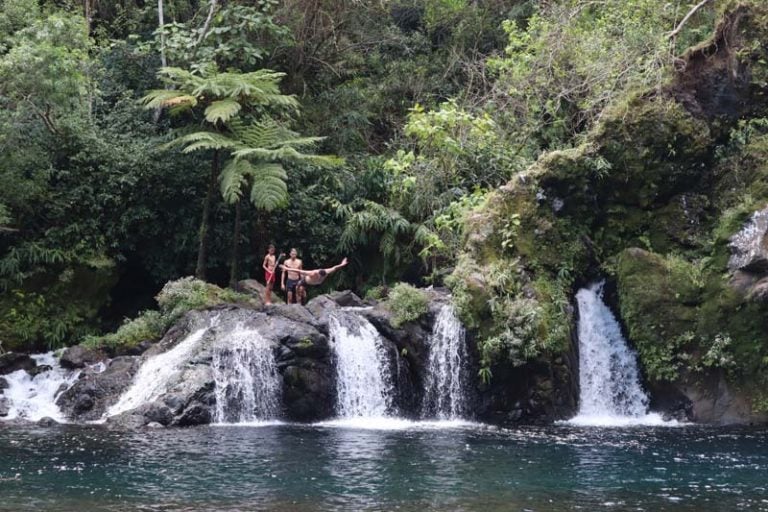The windward (east) coast: roughly stretching from St-Andre to St-Philippe, the wet east coast of Reunion Island directly faces the trade winds and often experiences light or heavy drizzle, particularly in the late mornings and afternoons.
The leeward (west) coast: sheltered from the trade winds by mountains over 2,000 meters high, the west coast of Reunion Island experiences a much more stable and sunny climate throughout the year. The west coast is also home to the island’s lagoon that’s sheltered by a coral reef as well as its top beaches.
The high plains: Reunion Island’s high plains join the two volcanic massifs (Piton des Neiges and Piton de la Fournaise). They begin from about 400 meters in altitude and cover large sections of the island. This landscape is much cooler and a lot less tropical, though variations between east and west do exist.
The summits: the high plains lead to the very top of Reunion Island, a land of breathtaking peaks where one forgets they’re on a tropical island. Capped by the summit of Piton des Neiges at an altitude of 3069m, it’s a land of contrast, where icy nights give way to hot days under the sun and even the occasional snowstorm!
The cirques: Reunion Island’s three cirques are massive calderas created when the once-active magma chambers that formed the Piton des Neiges emptied their contents and fell in on themselves. They are essentially amphitheater-like valleys formed by hundreds of thousands of years of erosion. Each cirque has its unique microclimate.
The southern lava field: the ever-present volcanic activity of Reunion Island is made real in the Mars-like southern lava field, completely barren and exposed to the elements. On a sunny day, this area is as hot as it gets.
